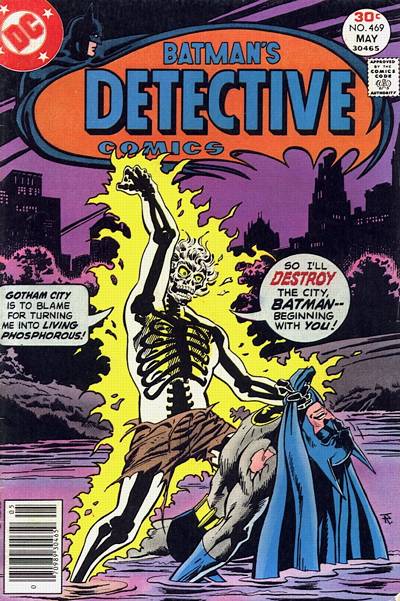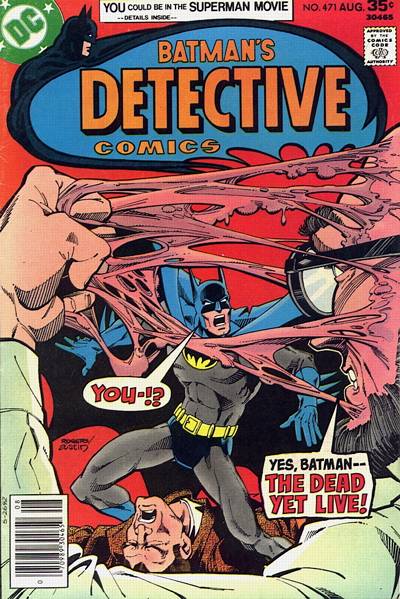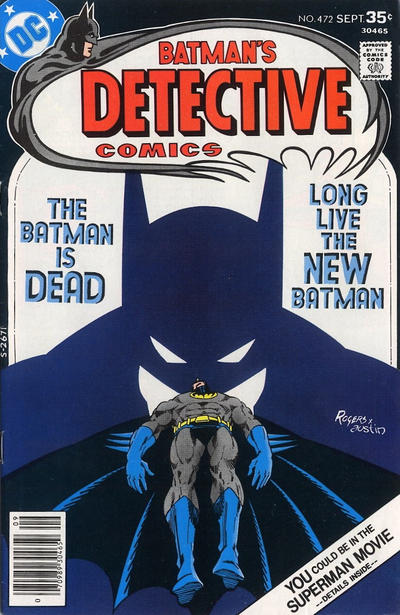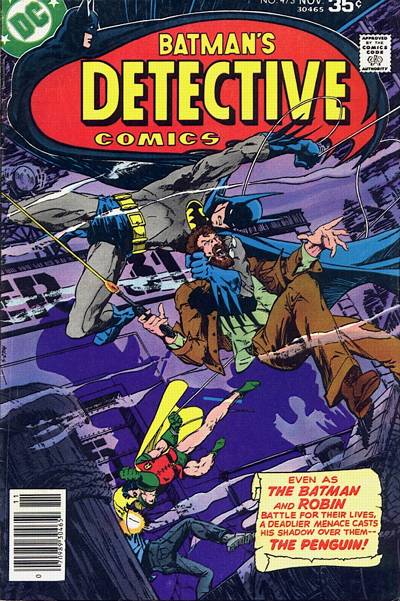Fact: The best Batman story not in print right now is the Steve Englehart-Marshall Rogers run from Detective Comics in 1977-78. This is a crime.
Now, I’m sure that there are all sorts of business reasons why this makes sense but that’s not my problem. (Or actually it is: My goal here in the weekly Gotham Tribune is to celebrate the best of Batman, no matter what.)
Below is Part 1 of a lengthy interview with Englehart about this run and its bittersweet legacy. (Part 2 will come later this week.)
Here’s what you need to know going in:
Englehart jumped onto Detective with issue #469 along with artist Walt Simonson, who would go on to his own legendary career. In the third issue of the story, Simonson was replaced by Rogers, a relative unknown. (The inker was the outstanding Terry Austin.)
What happened from that point on was pure magic. The story revolutionized Batman storytelling, building on the foundation cast by Denny O’Neil and Neal Adams several years earlier.
We got a long-form story constructed across a series of smaller tales. We got new characters like Rupert Thorne and Dr. Phosphorus. We got revamped villains who hadn’t been seen for decades, like Hugo Strange and Deadshot. We got guest appearances by Robin and the Penguin. We got an epic romance, featuring Silver St. Cloud, who figured out Batman’s identity simply because she’d gotten close enough to Bruce Wayne.
Oh, and we got one of the all-time greatest Joker stories ever: “The Laughing Fish.”
Englehart’s story was engrossing, exciting, dramatic and romantic, with a deeply melancholy finish. Rogers’ art was sharp and bold, highly detailed and modern, yet classic all the same, with many nods to the Batman art of the Golden Age.
The DNA of this story can be found in the Tim Burton and Christopher Nolan films; “Batman: The Animated Series”; epic stories like “The Long Halloween,” “Dark Victory” and “Hush”; and the immensely popular Arkham videogame series.
The run (including two additional chapters illustrated by Rogers but written by Len Wein) was collected in paperback under the forgettable title “Strange Apparitions.” Just try finding it for under $50 on the secondary market.
You’d probably be better off trying to hunt down midgrade copies of the issues themselves (#469-#479, with #477 primarily a reprint of an O’Neil-Adams tale). Or you could pick up the hardcover “Legends of the Dark Knight: Marshall Rogers” – but you wouldn’t get the Simonson chapters that set up the whole story.
Sadly, Rogers died in 2007. But Englehart is here to tell us all about their time on Detective. I’m going to pretty much let him have free rein here because it’s his words on the subject that matter most, not mine:
“I had left Marvel and was planning to go travel in Europe for a year, when DC’s new publisher, Jenette Kahn, called and asked me to come have lunch. She had inherited a company which had lost almost all of its stars to Marvel and needed to play catch up big time, so she went after me. Work-wise, she wanted me to fix all of their heroes, by way of Justice League. I told her I could only give her a year before I went to Europe, and yeah, I’d see what I could do with the JLA crew, but I also wanted to write the Batman in his own series because he’d been a favorite since I was a kid, seeing Dick Sprang’s dazzling art.
“I did not meet Marshall, or Terry Austin, or (letterer) John Workman until I got back from Europe nine months later. I had to get all my scripts done before I left (both the ones I’d planned, and the various others DC kept asking me to slip in, like Mister Miracle), so I was diligent about my work. I was also in California.
“So I wrote my scripts not knowing who was going to draw them. The odds were, it would be two journeymen, because as I say, the big names had mostly moved across town. So, I tried to make my scripts as bullet-proof as possible, and hoped for the best. I even asked that the panel borders be thicker than normal, to add more black to the page. That’s how into it I was.
“But then I dropped those scripts into the void, as far as I was concerned. Six months later, in a small village in Majorca, Spain, I got a package with the first printed books from editor Julie Schwartz, and opened them up, and I honestly said, ‘Thank you, God.’
“I was in the middle of writing my first book about an alchemist, ‘The Point Man,’ so there’s that, but I really took it as the universe offering me a pat on the back. The art was so great, and so right. It had everything I had hoped I’d get and a whole lot more. It was perfect. And we did not know each other.
“(A story from that time that I did not know until just a few years ago: when Marshall and Terry were doing that art, they were being routinely screamed at by DC’s art director, who hated it with a passion. As I said, I was at DC because some high-ranking people at DC were like that. They didn’t get outside a lot. And that might explain why most artists had left.)”
Given how successful the run was, I asked Englehart why it was so short, relatively speaking.
“It was supposed to be even shorter. The schedule called for seven issues of Detective before I had to get started on my trip, but DC liked the early issues so much they added an eighth. That became the Deadshot issue, which also allowed me to take some of the subplots I was playing out and give them additional depth, which made the whole series richer. So eight was great, because the plot had been for seven.”
Part 2, later this week.






February 11, 2017
I bought the stories in NY. They are in print. It’s called “Strange Apparitions”
The first Batman stories I red as a child back in Germany.
February 11, 2017
I’m sorry, Jurgen, but that book is no longer in print. Hasn’t been for years.